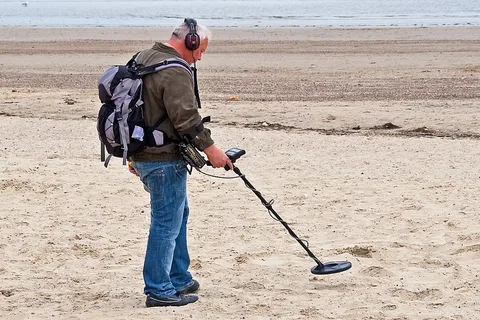How to use a highbanker for gold mining is a crucial skill for any beginner looking to embark on the exciting and potentially lucrative adventure of gold prospecting. In this beginner’s guide, we will explore the step-by-step process of setting up and using a highbanker for gold mining, as well as provide valuable tips and techniques for maximizing your success. Whether you’re a seasoned prospector or new to the world of gold mining, this guide will equip you with the knowledge and confidence to effectively utilize a highbanker and increase your chances of striking it rich.
A highbanker is a piece of gold prospecting equipment that is designed to process large volumes of material to extract gold. To use a highbanker, first, you will need to find a suitable location along a river or stream where gold is likely to be found. Set up the highbanker near the water, making sure it is stable and secure.
Next, shovel material from the riverbed into the hopper of the highbanker. The highbanker is equipped with a series of riffles and a matting or carpeting that will help capture the gold as the material is washed through the system. Turn on the water flow and begin feeding material into the hopper.
As the material is washed through the highbanker, the heavier gold particles will become trapped in the riffles and carpeting, while the lighter material is washed away. Periodically, stop the flow of material and clean out the riffles and matting to collect the captured gold.
Continue feeding material into the highbanker and collecting the captured gold until you have processed all the material you want to work with. Once finished, clean out the highbanker thoroughly to ensure all the gold is collected.
It is important to familiarize yourself with the specific operation instructions and safety precautions for the highbanker you are using. Always follow safe practices when using any mining equipment and be mindful of the environmental impact of your activities.
The Basics of Setting up a Highbanker for Gold Mining
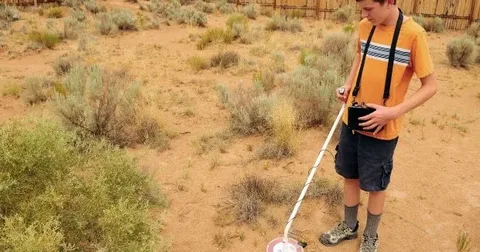
Setting up a highbanker for gold mining involves a few essential steps. First, select a suitable location to set up the highbanker, ensuring it is near a water source and has good access to gold-bearing material. Then, assemble the highbanker according to the manufacturer’s instructions, making sure all components are securely in place.
Next, position the highbanker in the chosen location, ensuring it is stable and secure. Set up the pump and hoses, ensuring a steady flow of water to the highbanker’s sluice box.
Once the highbanker is fully assembled and set up, it’s time to start feeding the gold-bearing material into the hopper. The highbanker’s design will allow the material to be washed and classified, with heavy particles, including gold, settling into the riffles of the sluice box.
Regularly clear out any unwanted material from the sluice box and continue feeding in more material, allowing the highbanker to efficiently capture gold particles.
Lastly, once finished, disassemble the highbanker and clean out the sluice box, ensuring all gold and valuable materials are recovered. It’s essential to follow all local regulations and environmental best practices while using a highbanker for gold mining.
Step-by-Step Guide on How to Operate a Highbanker
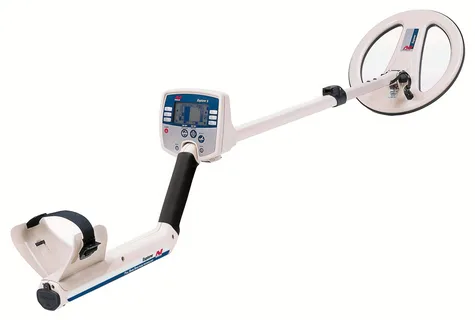
A highbanker is a type of mining equipment used to extract gold or other minerals from alluvial deposits. Here is a step-by-step guide on how to operate a highbanker:
1. Set up the highbanker in a location with a steady water supply, such as a stream or river.
2. Place the highbanker at the water’s edge and ensure it is securely anchored to prevent movement during operation.
3. Connect the intake hose to the water pump and submerge the pump in the water.
4. Turn on the water pump to start the flow of water through the highbanker.
5. Adjust the flow of water to ensure it is sufficient to wash the material in the hopper but not too powerful to wash away the gold.
6. Load the material into the hopper, ensuring it is evenly distributed to allow for proper separation of gold and other minerals.
7. As the material is washed through the highbanker, the heavier gold particles will settle at the bottom of the sluice box, while lighter material is washed away.
8. Periodically check the sluice box for gold accumulation and remove it using a snuffer bottle or other extraction tools.
9. Continue feeding material into the highbanker and extracting gold until the operation is complete.
10. After use, clean the highbanker thoroughly to prevent build-up and ensure it is ready for future use.
Following these steps will allow you to effectively operate a highbanker and extract gold from alluvial deposits. Remember to always follow safety guidelines and local mining regulations when operating a highbanker.
Maximizing Gold Recovery with Proper Highbanker Usage
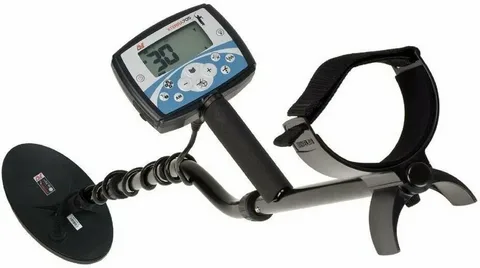
Maximizing gold recovery with proper highbanker usage involves several key practices. First, it’s important to properly classify the material being fed into the highbanker to ensure that larger rocks and debris are removed, allowing gold to settle and be captured more effectively. Additionally, adjusting the water flow and angle of the highbanker sluice box is crucial to create the optimal conditions for gold to be trapped and collected.
Consistent and thorough cleaning of the highbanker is also essential to prevent build-up and blockages that can impede gold recovery. Regularly inspecting and maintaining the equipment, such as replacing worn out or damaged parts, will help ensure efficient operation. Finally, being mindful of environmental factors, such as water flow and sediment levels, can further enhance gold recovery with a highbanker.
Essential Tips for Effective Highbanker Operation
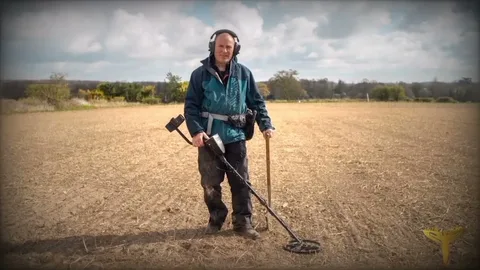
To effectively operate a highbanker, it is important to properly set up the equipment and to ensure that the water flow is adequate for efficient operation. Additionally, it is essential to regularly clean the sluice box to prevent clogging and to adjust the angle of the highbanker to optimize gold recovery. It is also important to classify the material being fed into the highbanker to remove any larger rocks or debris that could impede the flow of water and material through the equipment. Additionally, it is important to carefully monitor the feed rate to ensure that the highbanker is processing material effectively without being overloaded. Regular maintenance and inspection of the highbanker is crucial to ensure smooth operation and to prevent breakdowns. It is also important to be mindful of environmental regulations and to responsibly dispose of any tailings or waste material produced during highbanker operation.
Understanding the Different Components of a Highbanker
A highbanker is a piece of equipment used in gold prospecting to separate gold from sand and gravel. It consists of several components, including a hopper, sluice box, and water pump.
The hopper is where the material to be processed is placed. It typically has a grizzly screen to remove large rocks and debris before the material enters the sluice box.
The sluice box is a long, narrow channel with ridges and riffles designed to capture and retain the gold particles while allowing the lighter material to wash away. It is the primary component for trapping the gold.
The water pump is used to create a steady flow of water through the highbanker. This flowing water helps to wash the material through the sluice box and aids in the separation of gold from other materials.
In addition to these main components, a highbanker may also have additional features such as adjustable legs for leveling, a header box to regulate the flow of water into the sluice, and various types of matting or carpeting to capture fine gold particles.
Understanding how each component of a highbanker works together is essential for effective gold recovery and successful prospecting.
Choosing the Right Location for Highbanker Gold Mining
When selecting the right location for a highbanker gold mining operation, there are several factors to consider. Look for areas with a history of gold mining or known gold deposits, as this increases the likelihood of finding gold. Consider accessibility, water availability, and the potential for environmental impact. It’s also important to research and understand local regulations and restrictions related to gold mining. Conducting thorough research and possibly seeking guidance from experienced miners can help in choosing the most suitable location for highbanker gold mining.
Safety Precautions to Take When Using a Highbanker
When using a highbanker, some important safety precautions to take include:
1. Wear proper safety gear such as goggles, gloves, and boots to protect yourself from any potential hazards.
2. Ensure that the highbanker is set up on stable ground to prevent it from tipping over while in use.
3. Be cautious when handling the water pump and electrical components to avoid any risk of electrical shock.
4. Never operate the highbanker alone, especially when moving heavy equipment or working near water. Having a partner present can provide assistance in case of an emergency.
5. Follow the manufacturer’s instructions and recommendations for operating the highbanker to prevent accidents or damage to the equipment.
6. Take regular breaks to avoid fatigue and reduce the risk of making careless mistakes while operating the highbanker.
By following these safety precautions, you can minimize the risk of accidents and ensure a safe and productive experience when using a highbanker.
Cleaning and Maintaining Your Highbanker for Longevity
Cleaning and maintaining your highbanker is crucial for its longevity and optimal performance. After each use, it’s important to thoroughly clean your highbanker to remove any built-up dirt, rocks, and other debris. Use a brush and water to carefully scrub all components of the highbanker, making sure to pay special attention to the riffles and mats to ensure they are free from any blockages.
Additionally, regularly inspect all parts of the highbanker for any signs of wear and tear. This includes checking for loose bolts, damaged hoses, and worn-out mats or riffles. Replace any parts that show signs of damage to ensure that your highbanker continues to function effectively.
It’s also important to store your highbanker properly when not in use. Keep it in a dry and secure location to prevent rust and other forms of deterioration. By investing time in regular cleaning and maintenance, you can extend the life of your highbanker and ensure that it continues to perform at its best for years to come.
Advanced Techniques for Fine Gold Recovery with a Highbanker
Advanced techniques for fine gold recovery with a highbanker involve the use of specialized mats and filters to trap and collect the smallest gold particles. These mats, such as vortex matting or expanded metal mesh, are designed to capture fine gold that might otherwise be washed away. Additionally, using a clay claw or similar attachment can help break up clay and compacted material to release trapped gold. It’s also important to adjust the highbanker’s water flow and angle to ensure efficient recovery of fine gold. Regular cleanouts and careful examination of the concentrates will help maximize the recovery of fine gold.
Troubleshooting Common Issues When Using a Highbanker<
minelab vanquish 340 gold/h2>
Here are some common issues that you may encounter when using a highbanker and how to troubleshoot them:
1. Uneven flow of water: If the water flow in your highbanker is uneven, check for any blockages in the hose or pump. Also, make sure that the highbanker is set up on level ground to ensure proper water distribution.
2. Gold loss: If you are experiencing gold loss, check the angle and positioning of the highbanker. Adjust the angle to allow for proper gold retention and ensure that the sluice box and riffles are clean and free from any buildup.
3. Pump not working: If the pump is not working, check for any kinks in the hose or damage to the pump itself. Make sure that the pump is properly primed and that the intake is submerged in water.
4. Sluice box clogs: If the sluice box is clogging up, check for any large rocks or debris that may be obstructing the flow of material. Adjust the water flow and angle of the highbanker to prevent clogging.
5. Loss of fine gold: If you are losing fine gold, consider adding a secondary recovery system such as a gold wheel or blue bowl to capture any fine particles that may be escaping the highbanker.
By addressing these common issues, you can maximize the effectiveness of your highbanker and improve your gold recovery results.
In conclusion, using a highbanker for gold mining can be an exciting and rewarding experience for beginners. By following the proper setup and operation techniques, individuals can effectively separate gold from other materials and increase their chances of finding valuable nuggets. With practice and dedication, anyone can master the art of using a highbanker for gold mining and enjoy the thrill of discovering precious metals in their own backyard. How to use a highbanker for gold mining opens up a world of possibilities for those eager to explore the riches hidden in the earth. So, grab your highbanker and start your gold mining adventure today!
See also
https://prospectorsdream.com/?srsltid=AfmBOoqONPt-6KKfwQ1-c_TJ728rI-z4x04gYA6lfettylqOJsRcFXmF
https://www.goldrushtradingpost.com/prospecting_blog/sluice?category=17&srsltid=AfmBOopWIJx7VsLJOCxAS9Cb-upNgZjDQxCrAycimgp3BYUSB4_bEELc
https://www.skyscanner.fi/?previousCultureSource=GEO_LOCATION&redirectedFrom=www.espanol.skyscanner.com&userSessionDataId=9ef11b6e-220f-450b-89b6-774e3399e08c
https://goldenshark.pl/en/?srsltid=AfmBOoqNh8tGn_2n9EMGtpe0DMhHzQAMvTOPhdlIuHUfhxHPivbORS__

